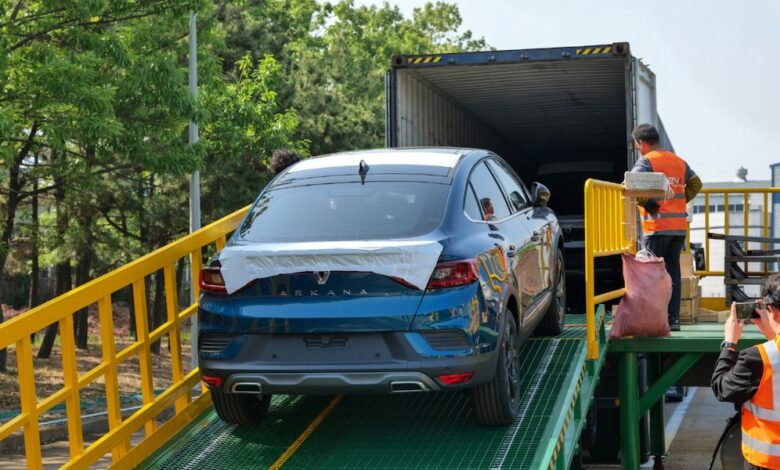Renault switches from pricey car carriers to containers for shipments out of Busan

Contrasting ship sector fortunes have been reflected in South Korea where French automotive giant Renault has started shipping brand new cars in containers to avoid prohibitively high costs associated with the car carrier sector.
Car carrier fortunes have been hitting record figures for the past 15 months, while container earnings have slid from their all-time highs in the corresponding period.
While moving secondhand cars by container is commonplace, shipping new cars in boxes is rare.
Renault Korea Motors is now shifting many of its compact SUV XM3 Arkanas from its Busan plant in 40-foot boxes, able to squeeze three cars in each box, whereby the middle car is tilted up to make way for the third one.
Renault has said it will now be shipping some 1,500-1,700 Arkana cars to Le Havre from Busan every month with plans to start shipping new cars in containers to other destinations including the US, Belgium, Italy, Mexico and Australia.
“New cars in containers can work well. In a 40HC, with a couple of ramps, you can get three average-sized cars in,” commented Andy Lane from Singapore-based container advisory CTI Consultancy, cautioning that terminal handling charges and inland distribution could be more expensive than vehicles moved by car carriers.
While there are now a record number of car carriers on order, with the Chinese to the fore, at present there is a shortage of available car carrying capacity worldwide, reflected in the soaring rates environment.
Last year, China’s COSCO debuted a new naval invention to combat this shortage, coming up with a foldable car frame, where vehicles can then be stacked into pulp carriers.

Maybe they could even get four cars in a 40′ HC if they use a custom designed racking system of a certain manufacturer!!!!
Terminal handling charges and inland distribution could potentially be more expensive than using car carriers. Additionally, the availability of car carrying capacity globally is currently limited, contributing to the high rates in the sector.
Indeed curious who advised or is handling that biz.
We could easily 4-pack the SUV XM3 Arkana
One crucial thing the article forget to mention is the higher reliability and frequency of container vessel schedules compared to car carriers. Also on average the much faster transit times.
Especially the latter is a highly underrated by OEM’s I feel, because buying a new car and hearing from dealerships you have to wait x amount of months for it to be delivered can greatly influence which car you will buy if another can deliver them 1-2 months faster.